 |
 |
 |
| |
HCC Risk Factors After SVR - LONGITUDINAL ASSOCIATIONS BETWEEN RISK FACTORS AND SUBSEQUENT RISK OF HEPATOCELLULAR CANCER IN PATIENTS WITH HEPATITIS C VIRUS INFECTION AND VIROLOGICAL CURE
|
| |
| |
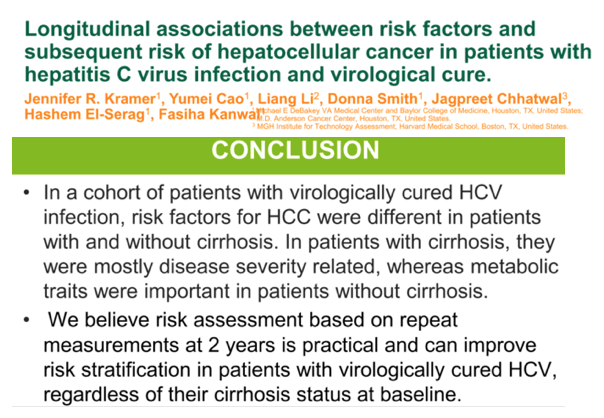
Background: The risk of hepatocellular carcinoma (HCC) persists in patients with HCV after virological cure. We sought to determine if risk factors for HCC change as time from treatment elapses.
Methods: We utilized the Veterans Affairs data to examine a cohort of patients with HCV who achieved sustained viral response (SVR) from DAAs from 1/1/2014 to 12/31/2018, and followed until HCC diagnosis, death, or 12/31/2019. We utilized cause-specific Cox proportional hazard models constructed at 3 landmark times (baseline, 12 and 24 months after SVR) to examine the associations between demographic (age, race, sex, marital status), clinical (cirrhosis complications, duration of cirrhosis, FIB-4, albumin, sodium, bilirubin, creatinine, sodium, hemoglobin, obesity, hypertension and dyslipidemia), and behavioral factors (alcohol abuse, smoking) measured at these landmark times and the subsequent HCC risk, stratified by cirrhosis status.
Results: We identified 98,612 patients with virologic cure [38.5% Black, mean age 61 yrs]. Almost 32% had cirrhosis at time of SVR. Incident HCC developed in 2,298 patients. Among patients without cirrhosis, the annual incidence rates of HCC was 0.21% and 0.27% in year 1 and 2, respectively. The corresponding estimates were 1.6% and 1.9% in patients with cirrhosis. The association between risk factors and subsequent HCC changed over the landmark time and varied substantially with cirrhosis status. In patients without cirrhosis, metabolic traits (diabetes and hypertension) and increase in FIB-4 were strongly associated with HCC risk at all landmark times. In patients with cirrhosis, demographic factors (risk lower in females and blacks), viral factors (risk higher in HCV genotype 3), and cirrhosis related factors (risk higher with longer cirrhosis duration, presence of varices, higher bilirubin, and lower albumin) predicted HCC risk at 12 months. Change in serum albumin and FIB-4 scores between baseline and 12-month landmark times also predicted HCC risk. Race, HCV genotype, and bilirubin were no longer predictive of HCC risk at 24-month landmark time, whereas change in hemoglobin from baseline became associated with risk of HCC.
Conclusion: In a cohort of patients with virologically cured HCV infection, risk factors for HCC were different in patients with and without cirrhosis. In patients with cirrhosis, they were mostly disease severity related, whereas metabolic traits were important in patients without cirrhosis. These data could inform HCC surveillance decisions in patients with cured HCV.
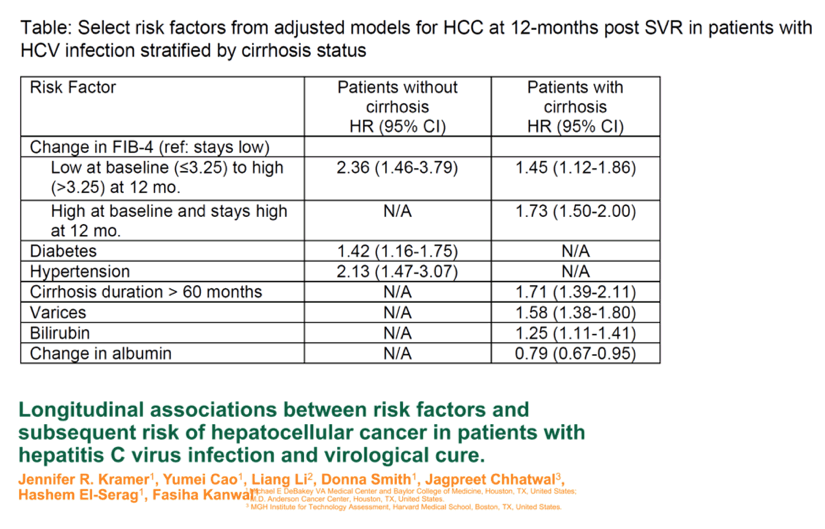
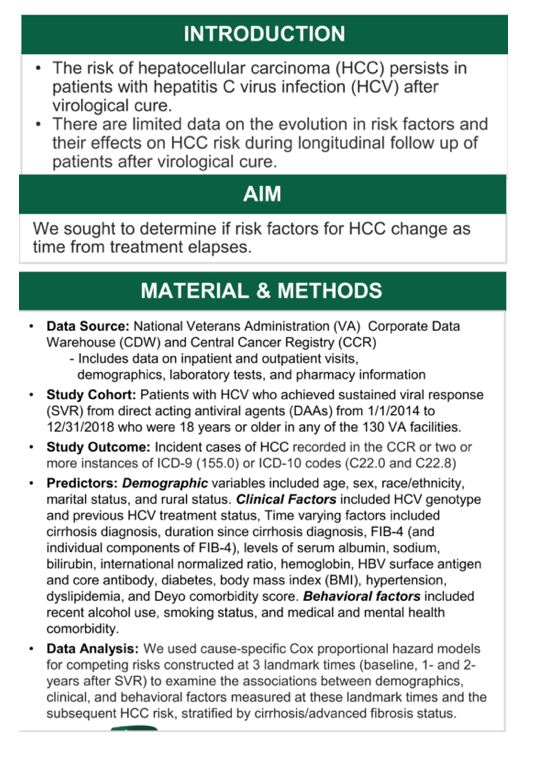
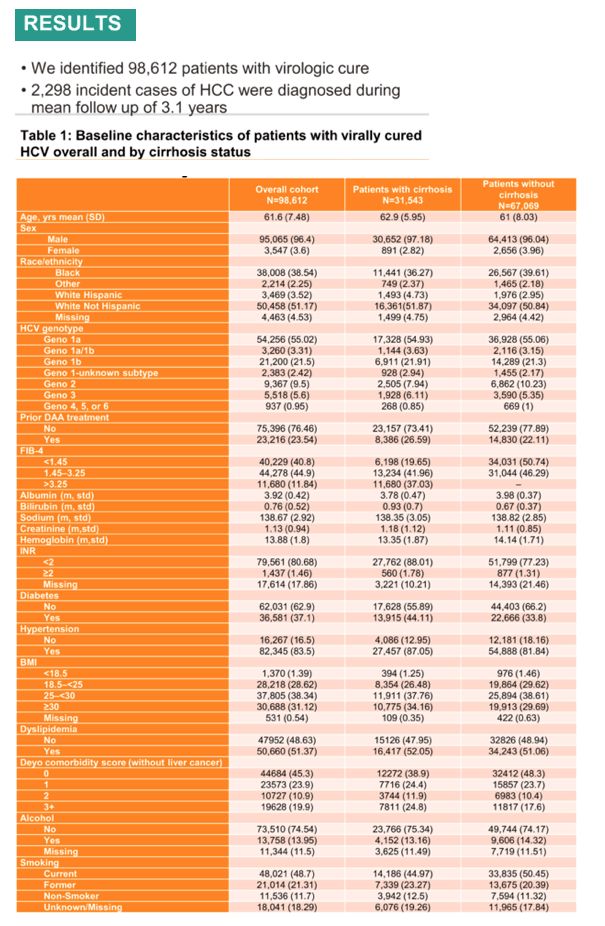
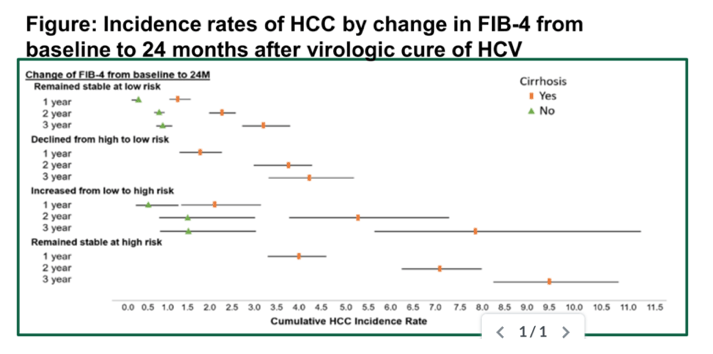
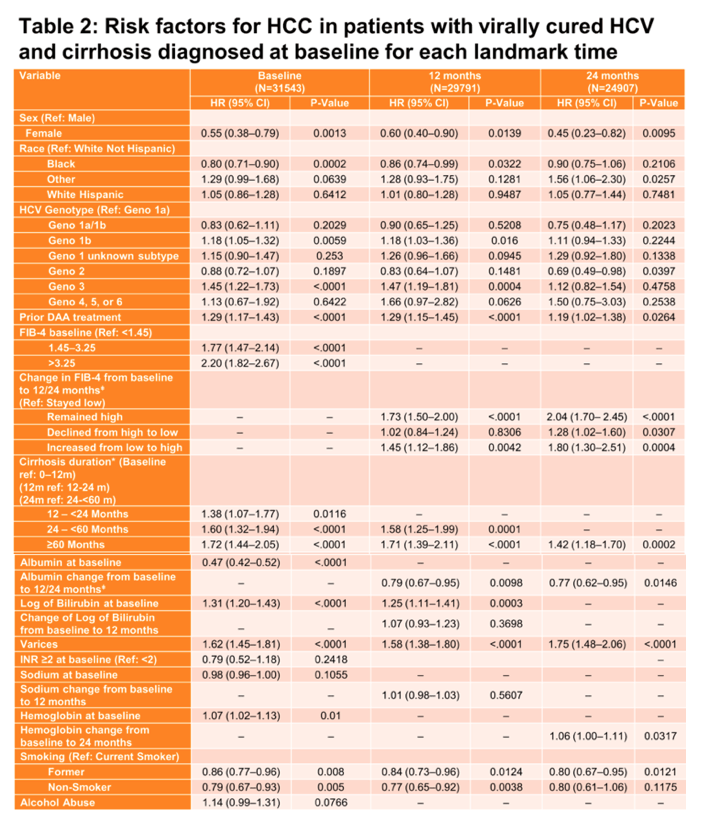
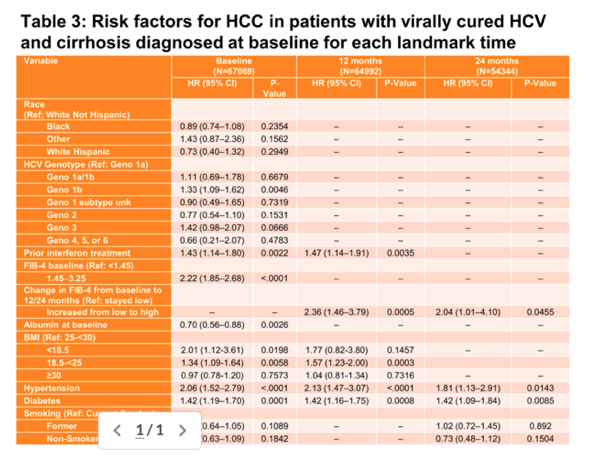
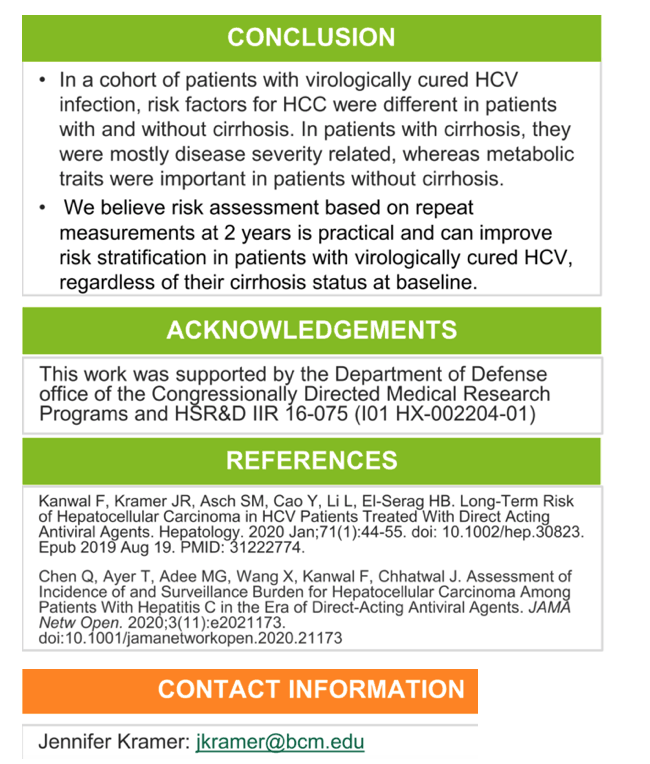
|
| |
|
 |
 |
|
|